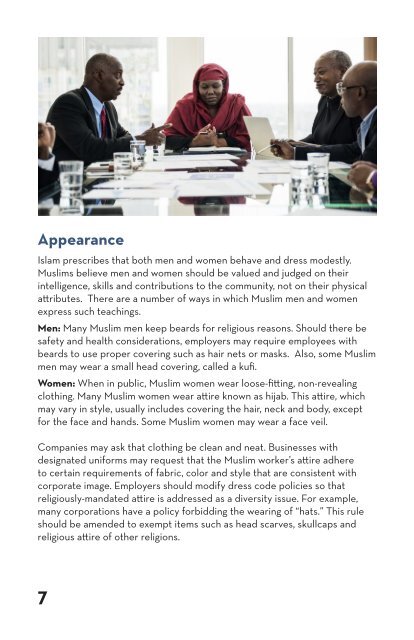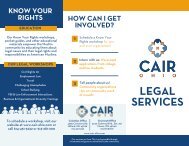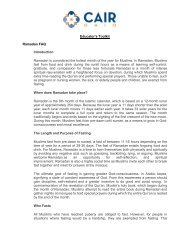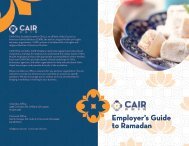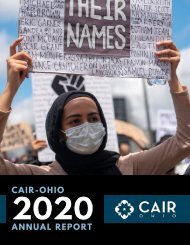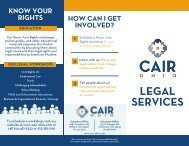CAIR-Ohio Employer's Guide to Islamic Religious Practices
This is a guide for employers that explains some basic Islamic religious practices including dress guidelines, holidays, prayer timing, and fasting, along with some suggested accommodations for employees.
This is a guide for employers that explains some basic Islamic religious practices including dress guidelines, holidays, prayer timing, and fasting, along with some suggested accommodations for employees.
You also want an ePaper? Increase the reach of your titles
YUMPU automatically turns print PDFs into web optimized ePapers that Google loves.
Appearance<br />
Islam prescribes that both men and women behave and dress modestly.<br />
Muslims believe men and women should be valued and judged on their<br />
intelligence, skills and contributions <strong>to</strong> the community, not on their physical<br />
attributes. There are a number of ways in which Muslim men and women<br />
express such teachings.<br />
Men: Many Muslim men keep beards for religious reasons. Should there be<br />
safety and health considerations, employers may require employees with<br />
beards <strong>to</strong> use proper covering such as hair nets or masks. Also, some Muslim<br />
men may wear a small head covering, called a kufi.<br />
Women: When in public, Muslim women wear loose-fitting, non-revealing<br />
clothing. Many Muslim women wear attire known as hijab. This attire, which<br />
may vary in style, usually includes covering the hair, neck and body, except<br />
for the face and hands. Some Muslim women may wear a face veil.<br />
Companies may ask that clothing be clean and neat. Businesses with<br />
designated uniforms may request that the Muslim worker’s attire adhere<br />
<strong>to</strong> certain requirements of fabric, color and style that are consistent with<br />
corporate image. Employers should modify dress code policies so that<br />
religiously-mandated attire is addressed as a diversity issue. For example,<br />
many corporations have a policy forbidding the wearing of “hats.” This rule<br />
should be amended <strong>to</strong> exempt items such as head scarves, skullcaps and<br />
religious attire of other religions.<br />
7


